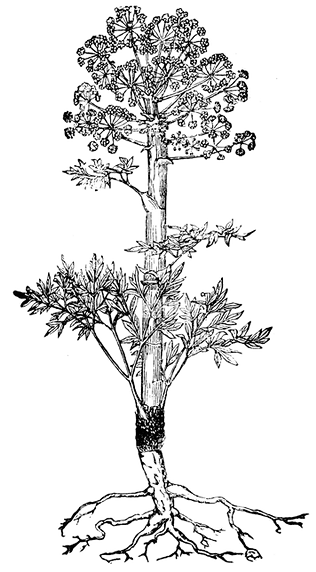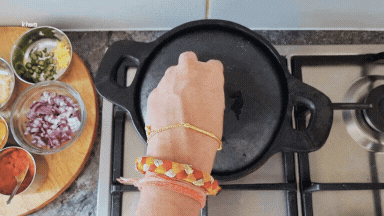What is Asafoetida?
Asafoetida is made from a dried gum resin extracted from a plant that is native to Iran and Afghanistan. The extracted resin dries in these large brown rock like blocks. These are ground into powder form and often it will be mixed with rice flour to allow for easy sprinkling and use.
References of the first use of the spice in Indian cooking date far back to ancient Ayurvedic texts around 600 BCE to 200 CE. It was brought over from Afghanistan through the spice routes and eventually introduced to Indian cooking and also medicinal uses by Ayurvedic scholars.
It’s intensely aromatic and the pungent flavour is a key characteristic making it complimentary with other spices when used in the right way.

Ferula assa-foetida
How is it used?
The classic use of this spice is for tempering. In Gujarati, we call this a vaghar, in Hindi, it is called a tadka. The strong, pungent composition of the hing dissipates when it is added to hot oil, and together with other whole spices like cumin, mustard or curry leaves, the flavour becomes almost fragrant like when onions are being friend. Hing is used to create depth of flavour and umami in a dish, balacing the other spices in a curry or shaak.

How else can I use it?
Other uses include:
-
Pickling. Added to the oil for a mango pickle, combined with mustard seeds and chilli powder, this creates a balance to the pickle and is also good for aiding in digestion.
-
Sprinkle. Asafoetida works well raw too! Add it to snacks like chips, gram flour gathia or other dishes for a kick of flavour. It pairs well with mellow and salty flavours. You can even add a pinch to your yoghurt raita!
 |  |  |  |
|---|---|---|---|
 |  |
